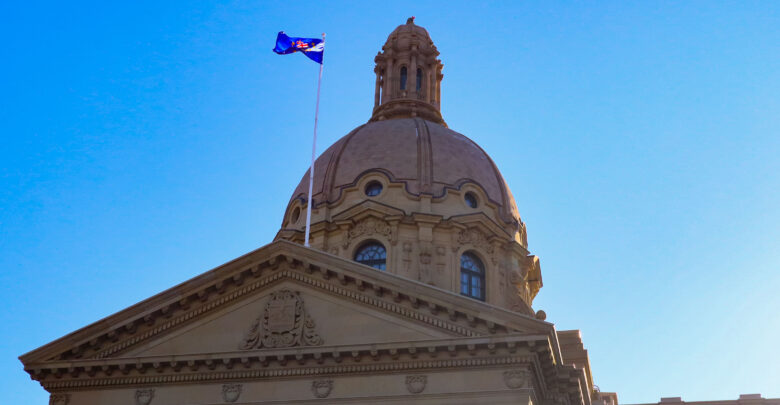Balancing act 2025: Alberta’s big health and economic moves
Alberta’s high-stakes gamble on health care and economic reform faces a critical test in 2025, as promises collide with public pressure, fiscal realities, and the clock.
 Leah Hennig
Leah HennigIf Alberta’s health care reforms are a medical drama, 2025 is going to be the nail-biting season finale — complete with virtual doctors, skeptical patients, and a government trying to pull off a fiscal miracle. Add in a deferred income tax cut, and it’s starting to feel like Alberta’s economy might need its own emergency room.
As Alberta steps into 2025, the province stands at a crossroads, with its health care reforms and economic policies poised to shape its trajectory. Premier Danielle Smith has tied her administration’s legacy to an ambitious overhaul of the health-care system. This transformation aims to address longstanding issues such as emergency room backlogs, physician shortages, and patient accessibility challenges. At the same time, the government faces criticism for deferring a promised provincial tax cut. This decision has sparked debates and doubt about the United Conservative Party‘s (UCP) economic priorities.
The health care reforms rolled out over the past year are both bold and contentious. Virtual care has emerged as a centrepiece of the initiative, offering patients remote access to consultations, diagnostics, and follow-ups. For rural and remote communities, this innovation promises to bridge gaps in service availability. However, the success of virtual health care hinges on the province’s ability to address digital literacy gaps and infrastructure limitations. Without reliable internet access or adequate patient education, the promise of equitable care remains elusive.
In addition to virtual care, the government has invested heavily in community-based clinics. These facilities aim to shift the health care model from reactive treatment to proactive wellness and prevention. By addressing health issues early, these clinics could reduce the burden on emergency services and hospital infrastructure. This could be particularly impactful in regions already underserved by the health-care system. For many Albertans, the success of these reforms will be judged not by policy announcements. Instead, it will be judged by tangible improvements in their health care experiences.
While health reforms dominate public discourse, economic policy adds another layer of complexity to Alberta’s future. The decision to implement an income tax cut for incomes under $60,000 has sparked debate. Advocates highlight the relief it provides to families and its potential to boost competitiveness. Critics, however, express concerns about the broader fiscal impact, especially as health care remains underfunded. Smith’s government emphasizes balancing affordability measures with fiscal responsibility, framing the tax cut as part of a sustainable economic strategy. But, the government has postponed this income tax cut until at least 2026.
This balancing act reflects a broader tension in Alberta’s governance: the challenge of reconciling fiscal conservatism with social investment. On one hand, deferring the tax cut allows the province to allocate resources toward pressing public needs. On the other hand, it risks alienating the working class and slowing economic recovery. Smith’s administration has promised to proceed with the tax cut once it realizes health-care savings. However, this conditional approach has left many questioning the government’s commitment to economic growth.
Public sentiment in 2025 remains mixed. For families struggling with medical bills or long wait times, the promise of health care reform is a beacon of hope. However, patience is wearing thin among those who expected quicker results. The reforms’ success depends on effective implementation and sustained funding, both of which are easier said than done. Missteps could erode public trust and fuel skepticism about the government’s ability to deliver on its promises.
The stakes are equally high for Alberta’s economic prospects. The province’s resource-driven economy remains vulnerable to external shocks, and the deferred tax cut adds another layer of uncertainty. Not to mention President Donald Trump’s enactment of a 25 per cent tariff on most Canadian products. Businesses are looking for signals of stability and growth. Any perceived hesitation on the government’s part could have ripple effects on investment and job creation. Changes in the economy could also affect the cost-of-living, which is already hurting many Albertans. At the same time, the administration must navigate these challenges without compromising its commitment to health care reform. This is a task that requires both political will and strategic foresight.
As the year unfolds, 2025 may prove to be a defining chapter in Alberta’s history. The success of health care reforms could position the province as a model for innovation and efficiency in public services. Conversely, failure could deepen public discontent and weaken Alberta’s economic standing. For Smith, this year is a make-or-break moment, one that will test her leadership and her vision for the province.
In the end, the road ahead for Alberta will be shaped by its ability to balance competing priorities. Health care reforms must deliver tangible benefits to patients. Meanwhile, economic policies must create an environment conducive to growth and stability. These goals are not mutually exclusive, but achieving them requires careful planning, bold decision-making, and a willingness to adapt to unforeseen challenges. As Albertans look to the future, they should do so with cautious optimism. There is a hope that 2025 will mark the beginning of a brighter, more equitable era for the province.




